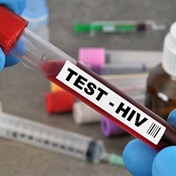"This is an interesting case for research," said Rodolf Tauber, a professor at the Charite university clinic, where the work was carried out. "But to promise to millions of people infected with HIV that there is hope of a cure would not be right," he said in a statement.
The patient, a now 42-year-old American living in the German capital, came to the clinic three years ago suffering from leukaemia, for which he was given chemotherapy and other treatment. He had also been HIV-positive for a decade.
T-cells, a key component in the immune response and which HIV attacks, are derived from bone marrow. Acting on a hunch, doctors replenished the patient's bone marrow after the treatment by using marrow from a donor carrying a specific genetic variant known to confer some protection against HIV. This mutation, already identified in previous research, occurs in 1- 3% of the European population.
20 months later, no sign of HIV
Known as Delta 32, it occurs in a gene called CCR5, on Chromosome 3. It reduces the number of docking points, called CCR5, on the surface of so-called T immune cells targeted by the virus, thus lowering the risk of cell penetration by the pathogen.
The bone marrow donor had a double copy of the Delta variant in his genome, meaning he had inherited a copy from both his mother and his father, rather than from just one parent. The patient was told to stop taking his HIV medication during the process, a move that would normally cause levels of HIV to rise sharply within a short time.
"Today, more than 20 months after the successful transplant, there is no sign of HIV in the patient," the statement said. But the case should not lead to "false hopes", Gero Huetter, one of the members of the medical team, stressed.
"This process is not adapted for the treatment of patients with HIV, neither today nor in the near future," Huetter said.
Previous research involving HIV drugs has shown that when HIV is reduced to below detectable levels, the virus holes up in refuges in the body, such as in dormant memory T cells in lymph nodes. It rebounds when treatment is stopped. The Berlin case has not yet been submitted to a peer-reviewed journal for publication. – (Sapa, November 2008)
Read more:
HIV drugs may prevent infection
Genes may prevent HIV-infection




 Publications
Publications
 Partners
Partners










